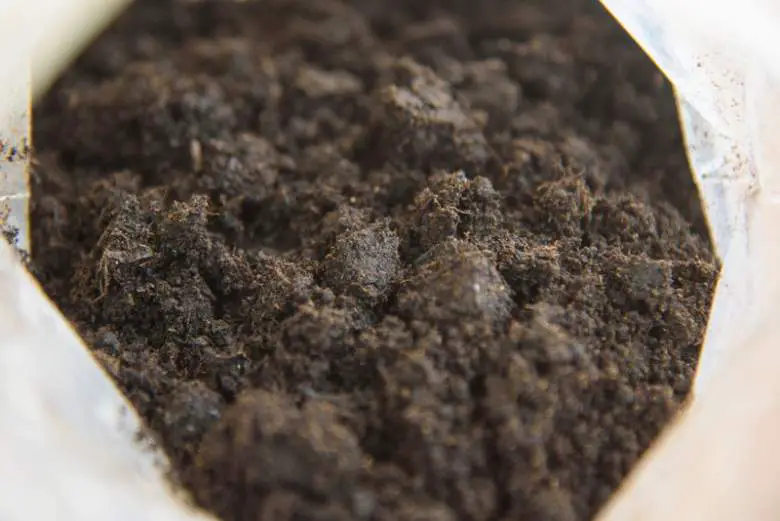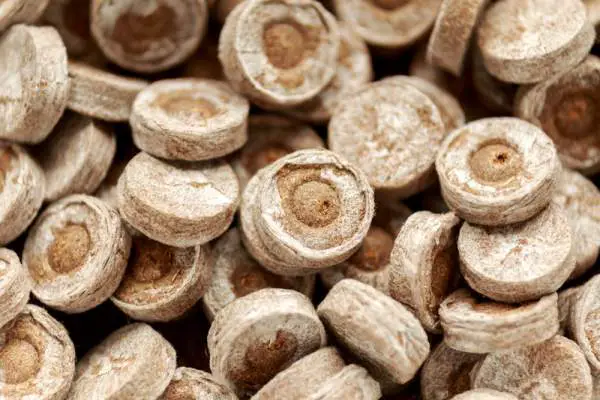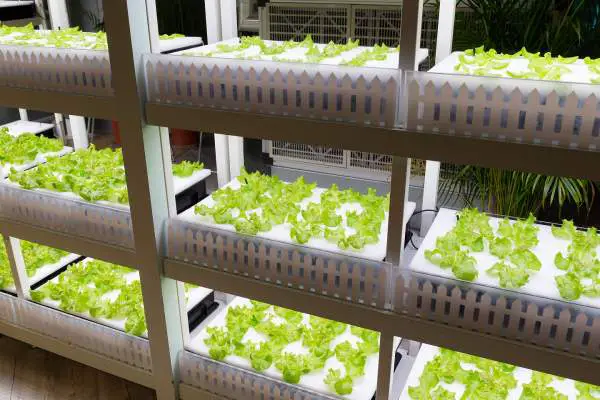Hydroponics is a growing method that disregards the use of soil yet it still requires an aggregate system to support the roots of the plants. Nutrient-rich water is then delivered through the medium selected to create a cohesive system that works extremely well.
But which grow media is best?
Peat moss or perlite are the two most common types used in hydroponics. Out of the two, peat moss has the highest capacity for holding water and is often used as the primary media. Although not ideal for all hydroponics set-ups, it can be balanced out to be a one size fits all media.
But what exactly is peat moss and why use it for hydroponics?
Peat Moss and Hydroponics
The formation of peat moss actually takes millennia to form, composed as it is from dead fibrous materials and the decomposition of other living organisms, specifically in peat bogs. The decaying material slowly creates even wetter conditions as the peat continues to absorb more water. This in turn leads to the expansion of the peatlands and encourages the growth of more peat.
These waterlogged areas are ideal for peat bog production and, due to the low oxygen content in the accumulation of the peat layers beneath the surface, the decompression rate is slowed down. This reduction in oxygen is a contributing factor in the length of time it takes for the peat to form, and why only about a millimeter of surface growth is recorded each year.
Due to this growth rate peat moss is not classed as a renewal resource. Peatlands do encompass large swathes of land, however, and, even though the zones are under almost complete water saturation, do allow regular harvesting because of this wide land coverage.
The countries that have the ideal conditions for peat growth and the landmass are few and far between. Among them are Finland, Ireland, Sweden, Germany, and Canada, which is the principal supplier to the United States.
For decades the method of gathering the peat involves taking the living moss from the surface of the peat bog while it is alive, in its entirety, which then leaves the next harvest only available in the following year.
A newer technique, mainly used in Europe, does not skim the surface completely bare, but leaves partial spores behind that will regrow the new peat at a faster rate.
This technique enhances the growing cycle and enables a bigger and more frequent harvest. The shoots that are left on the surface can continue to accumulate and multiply faster, while at the same time buds on the layers below the surface can continue to proliferate.
With the advent of this new technique, sustainability can become more of a reality, allowing more peat to be harvested, which in turn will make it more readily available, slow depletion on a global scale, and should also lessen the price to the end consumer.
Now, although peat moss didn’t become more readily available until the 1900s, it went on to revolutionize the way plants were grown in soil due to its numerous beneficial properties. Its usefulness became apparent because many part-time growers or homeowners didn’t have the ideal soil for growing the full range of crops they wanted.
This soil erosion occurred either due to layers being scraped away during the construction process or compacted by the heavy machinery and building materials piled on top of it.
With the introduction of peat moss mixed into their soil, they found that those obstacles to improving their poor growing difficulties were overcome, and they could now transform their garden into a thriving farming endeavor.
And then peat moss found its way into hydroponics.
Peat moss as a medium in hydroponic cultivation is a perfect fit not only because of its efficient capacity to maintain water but crucially its ability to hold on to nutrients, precious nutrients that can easily be washed out of other types of aggregates in a hydroponics system.
Yet at the same time, there are certain challenges that have to be weighed up when using this medium.
Peat moss is an organic substance and its decomposition doesn’t stop when it is harvested. That continuing decay plays a major role in its stability as a substrate, owing to its chemical nature constantly being in a state of flux.
Another contributing factor in this chemical instability is the source of where it was harvested and the particular species of moss that was used to produce the peat moss in the first place. Fibric, hemic, or sapric are three of the different material compositions for peat, and each has its own level of decomposition; fibric is the least, hemic has partial decomposition and sapric is the most decomposed.
For hydroponics, stability is a crucial component and for this reason, it is better to have peat moss that is more decomposed. The higher level of decomposition will ensure a higher chemical stability ratio, and that will make your hydroponic cultivation life go smoother and make life easier.
To find out its decomposition ratio, place a small amount of wet peat moss in your hand and gently squeeze. The amount of water fallout and the malleability of the lump between your fingers will tell you all you need to know about its stage of decomposition.
Basically, the less water that is squeezed out and the more of the peat moss that pushes out between your fingers indicates a higher level of decomposition. And the opposite results are true. If there is more water and less peat moss that squeezes out, the less decomposed it is. This is known as The von Post scale and registers the decomposition rate from H1 to H10.
Apart from the possible chemical instability, peat moss has a small level of acidity in it that can assist in equalizing and maintaining the correct ph range in a hydroponic network. The significance of this means that constant monitoring of the ph balance isn’t as difficult or time-consuming as with other media.
Due to this feature nutrient absorption by the roots will not be negatively affected.
Another beneficial feature is the water retention property that peat moss has to absorb large amounts of water and eliminate any amount not needed. Amazingly whatever excess water is initially absorbed is naturally drained away like an overspill to flow throughout the hydroponic system, transporting much-needed nutrients to the plant roots.
In hydroponics, peat moss is a light-medium and to set it up in a hydroponics system is fairly straightforward.
Have on hand a solution mixture of nutrient-rich water suitable for your seeds, and fill your seedling tray with peat moss. Add sufficient solution so that the peat moss is wet throughout before planting the seeds, then cover them with another ¼ inch level of peat moss. Then add more water.
At this time, place the tray under grow lights and cover it with a plastic sheet to contain moisture to encourage faster germination.
After the seeds begin to sprout the sheet can be discarded, then it’s just a matter of daily monitoring to prevent drying out from lack of water. If you notice a slight lack of water, a gentle misting spray is normally sufficient to take up the slack.
If and when necessary, it is advisable to thin out the plants if needed to create more growing space, and then when they are large enough, transplant them into small pots. As they continue to grow the smaller pot can be placed completely in a larger pot already filled with peat moss.
How to Overcome the Challenges of Peat Moss in Hydroponics
As with any grow media there are challenges when used in hydroponics, and with peat moss that manifests itself when it is used as a standalone product. This occurs because peat moss is anaerobic in nature, holds on to more water than most other aggregates, and, now that it is exposed to nitrogen, starts to degrade and compact.
This can then lead to the roots being choked by the compaction process which will lead to oxygen deprivation.
The solution is to add an amount of perlite to the peat moss. With the correct mixture, this will increase the aeration and solve the problem.
Another obstacle that will potentially need to be overcome is the ph level. When first harvested, peat is outside the range necessary for optimal hydroponic farming. Initially, it will actually be below the recommended ph range and that will create issues in your hydroponic setup.
So, a speedy solution is required at the beginning to stop the problem before it can become a headache.
To alleviate this potential lurking issue is possible as long as the rating on the peat moss itself is on or above level H7 on The von Post scale.
Once tested, and the low ph level is discovered, it is advisable to have the peat moss treated with calcium carbonate(lime). It sounds complicated but if you use the palm squeeze method, over a small period of time you will be able to judge where the decomposition level lies. And then understand how much lime needs to be added.
A useful tip is to treat the peat moss yourself for usage in hydroponics. Remember that peat moss is also used as a mixture with garden soil for non-hydroponic purposes and therefore will have different additives and may actually already be fertilized, which is detrimental in hydroponics.
If unable to do your own treatment, then purchase an unfertilized peat moss that has only lime added. This will save you time, ensure a successful hydroponic farm system, and will allow you more control over the nutrients delivered to your plants.
Types of Peat Moss in Hydroponics
There are many different grades of peat moss, with the varieties dependent on the location of harvesting, and that will reflect on which you select for your hydroponics system.
But that is not the only factor that should be considered.
Once the harvested peat arrives at a processing and treatment facility, the next steps will determine which one will be right for you.
At the facility laboratory, analysis tests are carried out on the peat for ph content, moisture, temperature, and bulk density, to name just a few. The peat is then graded and separated according to color, smell, and purity.
At this stage, some additives and fertilizers can be accurately added and blended in before being converted into the growing media you are searching for, and that will be suitable for the crops you intend to grow in your specific hydroponics setup.
The reasoning for using peat moss in hydroponics are numerous, as long as the minor drawbacks are resolved from the beginning.
The correct decomposition ratio has to be determined from the outset. Once that is revealed, the peat moss needs to be dried out and mixed with perlite, for example, depending on your hydroponic requirements. Once dried out it is surprisingly light and manageable, with open pores that allow good aeration and good drainage.
With the correct mixture with perlite, the issue of compaction is removed, and because the peat was originally formed in low oxygenated conditions, it won’t contain any fungus or harmful bacteria.
Peat moss is easy to work with so won’t cause dust fallout like some other growth media can. And, of course, making life easier should always be appreciated.
And one of the benefits of peat moss, depending on which peatland it is sourced from, is its microbial composition. These friendly microbes inhibit the growth of unhealthy pathogens that could negatively affect crop health and nutrient absorption.
The Reasons for Using Peat Moss in Hydroponics
When at first the decision is arrived at to start a hydroponics farm or extend a going concern, regardless of size, the ultimate goal is to grow the best crop possible in the fastest time. Hydroponics allows this to happen and combined with peat moss as a growing medium increases the harvesting capabilities and the ease of maintenance.
Hydroponics allows a wider range of growers the flexibility to set up their very own organic indoor farms in a variety of locations previously unheard of. This flexibility provides a wide array of options to choose the best and most cost-effective substrate suitable for the crops they intend to grow.
Peat Moss should be at the top of this list.
It has the flexibility as a grow media to give plant support, while at the same time absorbing sufficient water to maximize nutrient delivery to the roots. If mixed with perlite, it increases aeration and water drainage, alleviates compaction, and makes crop production more stable, and harvests more predictable At the end of the day, Peat Moss may not, at first sight, be the go-to media for every situation or crop selected for Hydroponics farming, but it has the ability to be morphed into the ideal substrate to deliver a perfect harvest every time.





